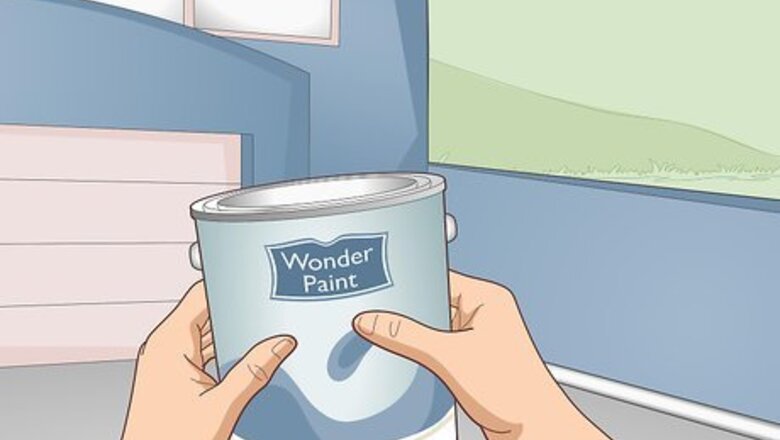
views
Painting the Pipes

Choose a color that matches the building. Pipes are often white or metallic-colored, which can really stand out from the rest of the building. Hide these eyesores by repainting them. Choose a color that blends in with the building to hide the pipes. Alternatively, you can paint them a different color from the building but that still compliments it. This is more decorative. You have an option between spray paint and roll-on paint. Both will work fine, but the application is different. Spray paint is faster to apply but could make a mess, so you have to cover everything carefully. You also can't apply it in windy conditions. Roll-on paint is easier to control, but more time-consuming to apply. Weigh these strengths and weaknesses to choose an option.

Cover your work area with a sheet. Whichever type of paint you use, you;ll need to keep your work area clean. Spread a cloth or sheet around the pipes to protect the grass. If you're spray-painting, tape newspapers to the walls of the building to protect them. Remember to wait until the wind dies down to spray paint. Otherwise the paint will get everywhere.
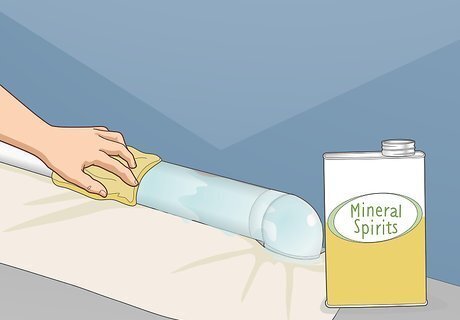
Wipe the pipe down with mineral spirits. Take a clean rag and wet it with mineral spirits. Wipe down the entire pipe. This removes any gunk or residue that will interfere with the paint. Mineral spirits are usually not irritating, but wear gloves if you have sensitive skin. Run your skin under cool water if you directly touch any. You can buy mineral spirits at most hardware stores.
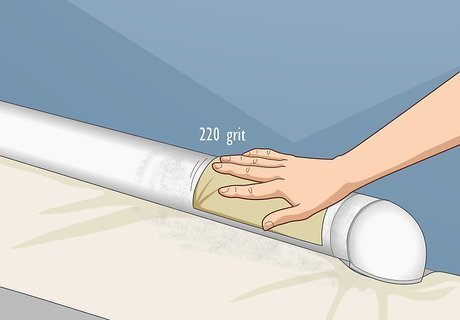
Sand the pipes with 220-grit sandpaper. Whether the pipes are metal or PVC, they'll still need to be sanded before painting. This roughs the surface up to grip the paint better. For older metal pipes, this will also help to remove rust. Sand the entire surface of every pipe you're painting.
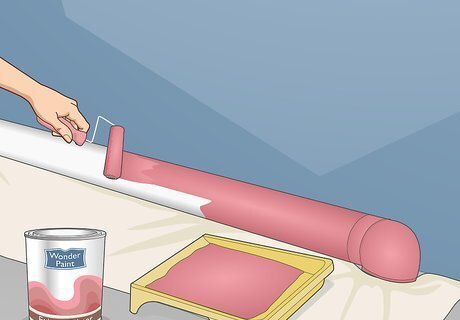
Apply primer to the pipes. Primers come in spray or roll-on types. Each has the same strengths and weaknesses as spray or roll-on paint. If you use spray primer, hold the can 6 inches (15 cm) away from the pipes and spray it on. For roll-on primer, wet a roller and apply an even coat to the pipes. Let each sit for 3-6 hours to dry. The type of primer you use has no bearing on the type of paint you have to use. If you use spray primer, you don't have to use spray paint, and vice versa. If you are painting metal pipes, choose a primer that inhibits rust.
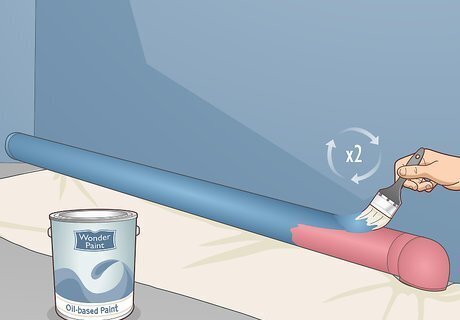
Paint the pipes with 2 coats. With all the prep work done, begin painting. Apply an even coat of paint with either a roller or a spray can. When you've covered the whole pipe, let the coat dry for 4-6 hours. Add a second coat, then enjoy your newly-painted pipes. The drying time depends on local weather conditions. If it's humid, it will take longer. Check if the paint is dry by pressing it lightly. If it feels wet or sticky, it hasn't dried yet.
Installing Covers
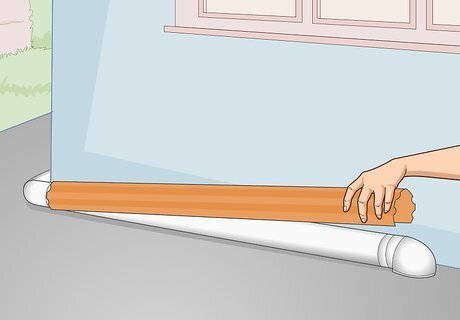
Use decorative pipe covers for a removable solution. While painting can make the pipes blend in, it’s a large job that you can’t easily reverse. A pipe cover can accomplish the same goal without as much commitment. Check the hardware store or online for outdoor pipe covers and find an option that appeals to you. Follow the installation instructions to camouflage the pipe. There are all types of pipe covers available. Some are just a solid color, and some look like rope wrapped around the pipe. Look at the options to find one that appeals to you. Make sure any covers you use are safe for outdoor use. Rain and other elements can ruin coverings if they’re indoor-only.
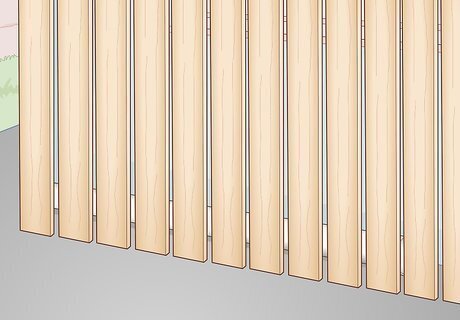
Build a wooden wall to cover the pipes completely. A wooden wall can cover the pipes and also add a decorative flair to the building. Use some lumber and build the wall to your own specifications, or find a pre-made covering in the hardware store. Find a color that blends in or complements the building and paint the wood. Then, drive the covering into the soil in front of the pipes for a solid covering. There are many design styles you can choose from. A slatted design gives a more rustic look to the building. A solid wall isn’t as decorative, but will cover the pipes better.
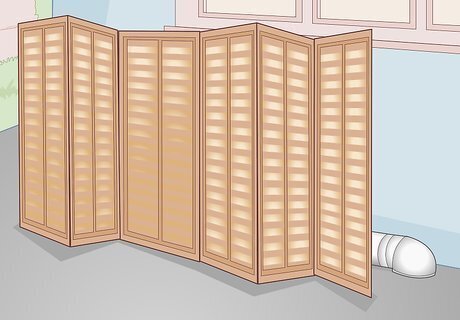
Set up shutters in front of the pipes to maintain easy access. For a similar effect to a wooden wall but with easier access to the pipes, use a foldable wooden shutter. Unfold and stand the shutters in front of the pipes for a simple covering. You can paint the shutters to match the building better if you want to. This helps the whole setup blend in better. You may have to secure the shutters in windy weather. Place heavy objects around them, or drive them slightly into the ground for more stability.
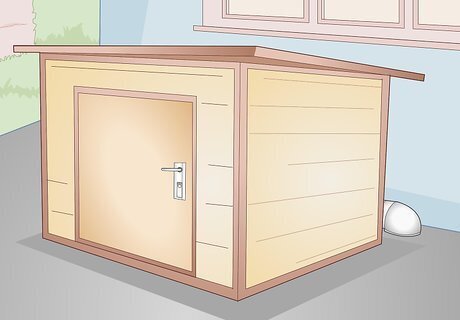
Place a storage shed in front of the pipes for a useful covering. A shed can cover the pipes and also be a place to store yard equipment. You can buy small, pre-made storage sheds from a hardware store, or build your own if you prefer. Place the shed in front of the pipes to cover them completely. Depending on how high the pipes are, you may just be able to use a small storage box for the same purpose. Remember that some areas have laws mandating how close a shed can be to a home. Check all your local laws to make sure you don’t violate any building codes.
Using Plants to Hide the Pipes
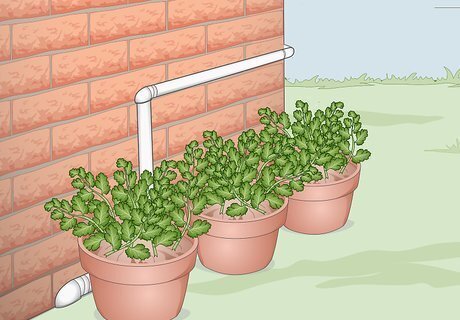
Place potted plants around the pipes so they’re less noticeable. For low pipes, a few potted plants can help them blend in. Choose flowers or shrubs that complement the building color and place them around the pipes. Let them grow out and hide the unsightly pipes. You can plant the flowers yourself, or if you want to cover the pipes right away, buy plants that are already grown. You can pair this solution with other ones. For example, paint the pipes a darker color to blend in better with the plants. The added bonus of potted plants is that you can easily move them if the pipes need any maintenance.
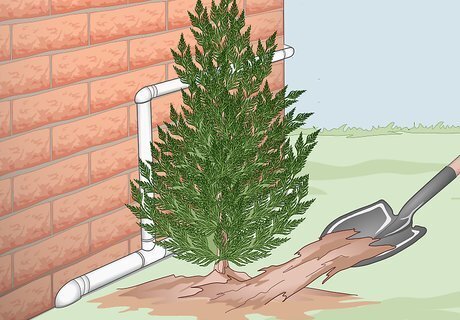
Plant privacy shrubs to hide large pipes. If you prefer to cover the pipes completely instead of just camouflaging them, privacy shrubs can do the trick. Plant them around the pipes and let them grow in. As they can taller and fuller, they’ll hide the pipes from view. Leave enough space between the shrubs and pipes for a person to fit. That way, you can still maintain the pipes without removing the shrubs. Make sure any plants you use have shallow root systems that won’t damage the pipes. Some evergreen shrubs and viburnums are good choices. Ask a landscaper for recommendations if you aren’t sure which plants are best for your property.
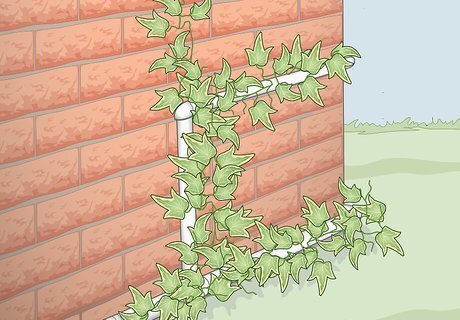
Let ivy grow up the pipe. Ivy is a plant that grows vertically up walls. While it’s sometimes a nuisance, it can be perfect for covering unsightly pipes. If ivy grows naturally on your property, let it grow up the pipes to hide them. Otherwise, plant ivy in a planter under the pipes and press it against them. The ivy will naturally start growing up the pipes. Ivy can potentially damage bricks walls or siding if they have cracks or crevices for the roots to enter. Keep the ivy trimmed so it only grows on the pipes. Do not plant English ivy. This is an invasive plants species that some communities have banned. Remember that if you need any maintenance on the pipes, the ivy will have to be removed. Ivy grows fast, however, so you can replace it within a few weeks.




















Comments
0 comment